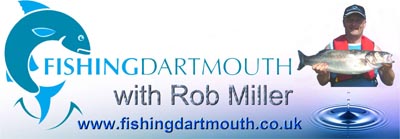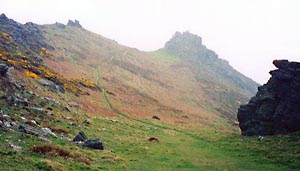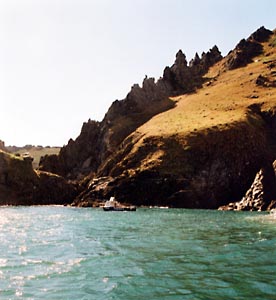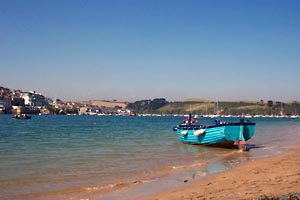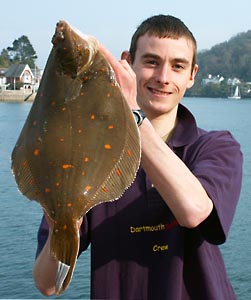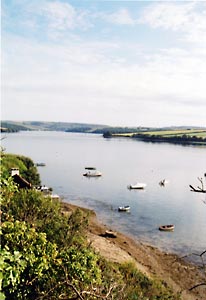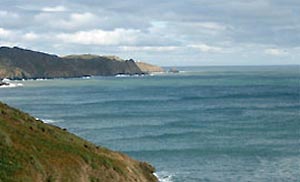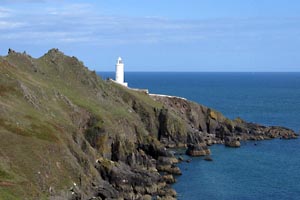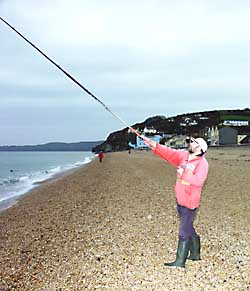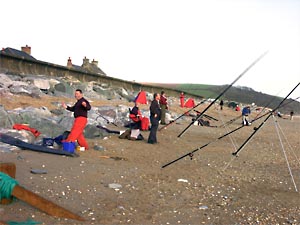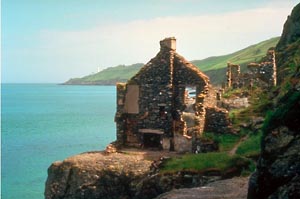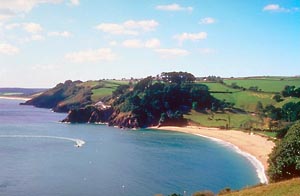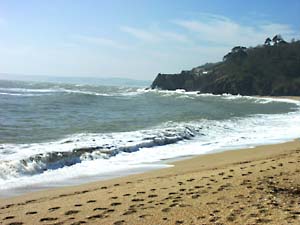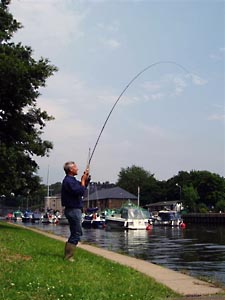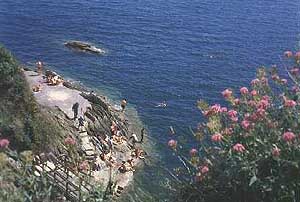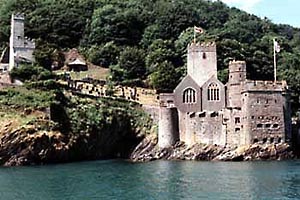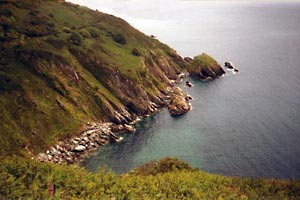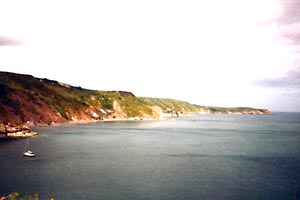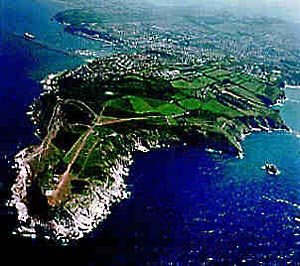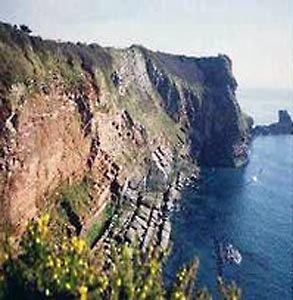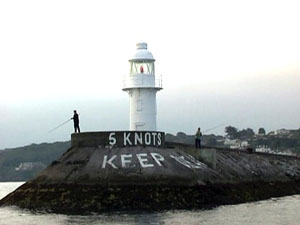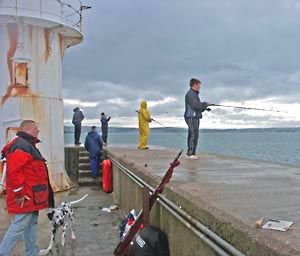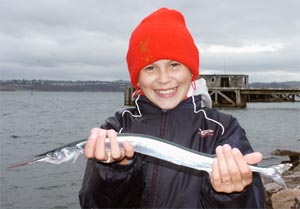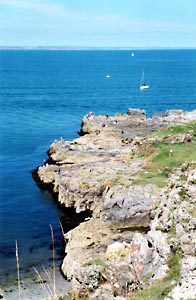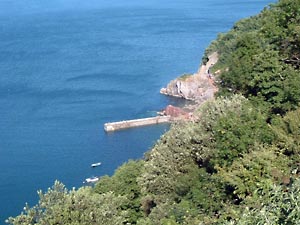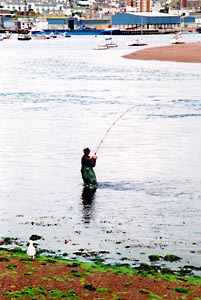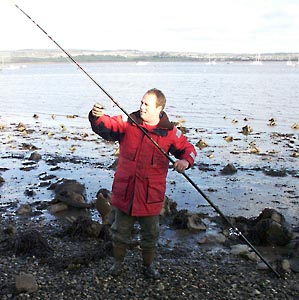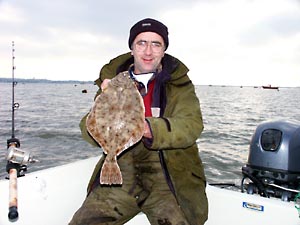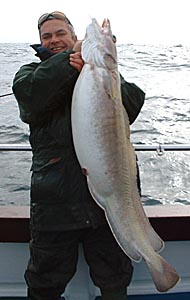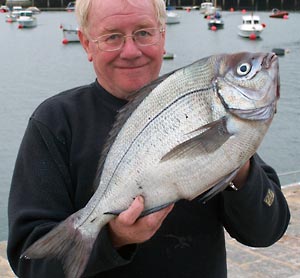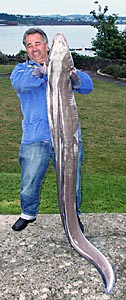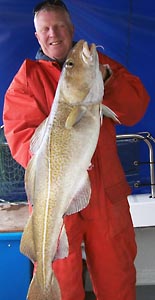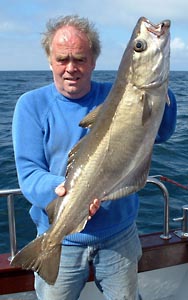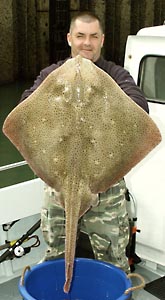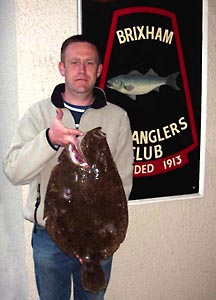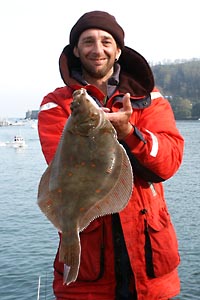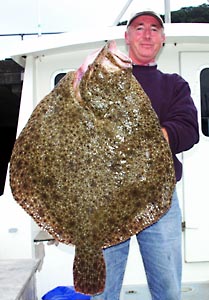|
|
||||||||||||||||||||||||||||||||||||||||||||||||||||||||||||||||||||||||||
Popular Marks |
||||||||||||||||||||||||||||||||||||||||||||||||||||||||||||||||||||||||||
| Here's a
general overview of some of the popular recreational sea
angling marks between Exmouth and Salcombe. The area is blessed with a wide choice of fishing from both boat and shore. Sheltered fishing can be found in most conditions. The fish to be caught range over twenty or more species. In the 2005 Torbay Sea Angling Festival, 73 fish over 100% of specimen weight were recorded by the many anglers who enjoyed this event. Whatever your preferred fishing, it is catered for within the coastline stretching from Exmouth to Salcombe. From shore you can choose to float fish, spin, or cast from the rocks or beach. Shore marks are many and varied, offering a broad choice of fish including Mackerel, Garfish, Pollack, Plaice, Thornback Ray, Wrasse, Dab, Flounder, Conger and Bull Huss. For the specialist, Mullet and Bass are the prime targets. Afloat you have the best wreck fishing to be found anywhere. Remember, it all started at Brixham. Inshore marks include the "Skerries Banks", renowned for its Plaice fishing and Blonde Ray. The new potential British Record Blonde Ray was caught here on Sunday 30th April 2006 and weighed in at 39 lbs 10 ozs, exceeding the previous record for this species by 1 lb 1 oz. If reef fishing is more to your liking, that is also available. Boat enthusiasts can expect great sport from charter boats, or their own craft, with catches as diverse as Conger, Pollack, Cod, Ling, Pout and Bream from wrecks, and Bass, Plaice, Dab, Conger, Bull Huss, Wrasse, Bream, Blonde, Small Eyed, Spotted and Thornback Ray from inshore marks. Whatever your choice, the fishing will be outstanding. Bolt Head, Salcombe
This is the western limit for shore anglers. Bolt head is a long walk, even for the sure footed.
Day: Wrasse Mackerel, Garfish and Pollack. Night: Dogfish, Bull Huss, and Ray. Salcombe Harbour
Too many marks to list! Favourite places to fish include: East Portlemouth, Snape Point.
Day: Thornback Ray, Plaice, Wrasse, Pollack, Coalfish, Gilthead Bream, Mullet, and Flounder. Night: Ray, Sole and Plaice. Kingsbridge Estuary A sheltered estuary (actually it's really an inlet which runs off the main body of Salcombe Harbour) with a reputation for quality fish.
Thornback well into double figures, Small Eyed Ray, Plaice, Dabs, Flounder, Wrasse, and Pollack all make an appearance. Prawle The most southerly point on the coastline of Devon. Many marks are quite easy to get to, though you will have a steep climb on your return!.
Day: Wrasse, Mackerel, Garfish, Pollack and Bass. Night: Ray, Conger, Bull Huss and Rockling. Start Point
Start Point is one of the most exposed peninsulas on the English Coast, running sharply almost a mile into the sea on the South side of Start Bay, to the west of Dartmouth. The Lighthouse, sited at the very end of the headland, has guided vessels in passage along the English Channel for over 150 years. Fish the gullies for Bass and Wrasse. Live Sandeel and Live Prawn for Bass and Pollack. Peeler or Hardback Crab for the better Wrasse. Early morning or evening best time for Bass. South Hams Beaches
These frame the shoreline of Start Bay, a short distance to the west of Dartmouth. Easy Parking and fishing. Prime beach locations are Slapton, Hallsands and Beesands, about 9 miles West of Dartmouth.
South Hams District Council enforce car parking charges by "Pay and Display" at Slapton, even if you hold a "Disabled" badge.
Day: Dabs, Plaice, Mackerel, Garfish and Bass. Night: Dogfish, Pout, Whiting and Bass. Blackpool Sands
A private beach. about 4 miles west of Dartmouth, near the village of Stoke Fleming. Plenty of parking available. Busy during the day. Fish evenings either end for LSDs, Dabs, and Bass. Float fish for Mackerel and Garfish. Please observe notices.
Dart Estuary There are many productive marks scattered throughout the Dart, from the outer entrance on both the Kingswear and Dartmouth banks of the River, right up to Totnes.
Day: Ray, Mullet and Wrasse. Night: Rockling, Ray and Dogfish. Compass Point On the western entrance to the River Dart. A long walk. Rocky ground, mostly Wrasse. Float fish for Mackerel and Garfish. Dartmouth Castle, Castle Cove
Access to this popular cove has been closed for almost 3 years, following a cliff fall which damaged the access path. It has recently been re-built and should re-open by early June 2006. Rocky ground, mostly Wrasse. Float fish for Mackerel and Garfish.
Outer Froward Point The outer landfall to the west of the entrance to the River Dart. A very long hard steep walk.
Rocky ground, mostly Wrasse. Float fish for Mackerel and Garfish. Ledger at night for Bull Huss and Rockling. Battery Point A rocky mark at the eastern entrance of the River Dart. Fish into deep kelp filled gullies for Wrasse. Fish to specimen size a possibility here. Float fish for Bass, Mackerel and Garfish. Baits - Hardback Crab, Peeler Crab, Live Prawn, and Ragworm. Scabbacombe Area Just west of Brixham, on the way to Dartmouth. A long walk along cliff paths, with a steep part at the end.
Day: Pollack, Wrasse and Mackerel. Night: Rockling, Ray and Dogfish. Berry Head A favourite mark. Access to the Quarry is on foot only, unless you have a "Disabled" badge displayed on your vehicle. A parking fee must be paid in the car park at the top.
Day: Mackerel, Garfish and Scad. Night: Scad, Mackerel, Conger, Rockling, Codling, Whiting. Berry Head Quarry Access to this old quarry is by foot only. Steep walk back. Float fishing excellent for Mackerel, Garfish, and occasional Pollack. Mullet fishing also productive. Fish from the quay wall or the flat rock ledges to the far right. Casting will produce Dabs and a few odd species; after dark, Whiting and Pout. It is possible to fish the front of Berry Head, but it would be advisable to go with an angler that knows the area well. Baits for ledgering, Peeler Crab, Lug and Ragworm. Brixham Breakwater
Although the Fish Quay, Oil Jetty and Marina are "Out of bounds" for shore anglers in the Torbay Festival, Brixham Breakwater is one of the easiest and largest local marks to fish.
This half mile long breakwater guarding Brixham is excellent for float fishing along most of its length, but the top area is on the end, by the lighthouse. Fish inside or outside from the middle to the end for Mackerel and Garfish and the occasional Pollack and Scad.
Pot markers might be a problem. Bass and Conger caught near the old fuelling jetty late evenings and early mornings. Mullet fishing is excellent from the inside, opposite the "paint" floats. Do not obstruct the RNLI Torbay Lifeboat fairway. Day: Mackerel, Mullet, Garfish, Dab, LS Dogfish, Wrasse, and Pollack. Night: Conger, Rockling and LS Dogfish. Torbay, between Brixham and Torquay Many marks with easy access. Fishing similar to Brixham. Local harbours at Brixham and Torbay enforce their own "No Fishing" policy for shore anglers. Access to fish from shore into Brixham Harbour from the Breakwater is AOK. No fishing into Paignton Harbour. Anglers fish from their own boats in both venues, though fishing on foot from any pontoons is forbidden. Torquay Harbours and Piers Please observe notices. There are a few restricted areas. Princess Pier, the stone arm, approached from the Princes Theatre, is popular for float fishing for Mackerel and Garfish. Early mornings and evenings best. Haldon Pier is not so popular. Pollack sometimes caught. Excellent Mullet fishing but areas to fish are restricted. We have sought additional clarification from the Harbourmaster regarding interpretation of his Authority’s recently modified policy regarding fishing in Torquay, Paignton and Brixham Harbours. With immediate effect all fishing into any of the above harbours by rod and line anglers is completely prohibited throughout the year, however, for the 9 days of Torbay Festival, a compromise has been reached which continues our existing past best practice for competitors: “Anglers may float fish into Torquay harbour area during the Festival. They will not be permitted to cast feathers or other heavily weighted fishing tackle. Neither will they be permitted to fish from any of the pontoons within the harbour.” Hope's Nose & Sandy Point As you walk down the slope to Hope's Nose, Sandy Point is to the right side and Hope's Nose to the left.
The fishing at Sandy Point is not as the name sounds. It must have been named by a tackle dealer! It is mainly rock, although Hope's Nose has a sandy bottom. Day: Mackerel, Garfish, Wrasse, Mullet, Plaice, Dab, LS Dogfish, Bass, and even an occasional Smoothound. Night: Conger, Whiting, Codling, Rockling and LS Dogfish. Meadfoot Beach and Thunder Hole The rocks off the slipway, the middle of the road, and the small car park slipway produce Bass when conditions are right. Use live Sandeel, Peeler Crab, or spin with Rapalas or other lures. Thunder Hole is located at the end of Meadfoot Promenade. Climb over the rocks. Mostly float fishing for Mackerel and garfish. Babbacombe Pier
Located at the bottom of one of the steepest hills in this area. Fortunately, you may drive down to it. Day: Mackerel, Garfish, and Scad. Night: Conger, Codling, Mackerel and Whiting. River Teign
Regarded as the prime Flounder River. September is not a top month, but reasonable sized Flounder can be caught. Top marks include Back Beach, Loxton Steps, Red Rocks, Gasworks, Flow Point, Charlie's, and Coombe Cellars. You are only allowed to cross the railway line which follows the east bank of the River Teign in permitted places. Float fish for Mackerel and Garfish from the beach in the estuary. Fishing is not permitted from Dock property or Shaldon Bridge. Day: Flounder, Mullet and Silver Eels. Night: Silver Eels. River Exe
Popular spots include Starcross, the Lock, Green Buoy and Lympstone. Day: Flounder, Mullet and Silver Eels. Night: Silver Eels. Exmouth Beach A sandy beach with a lot of tidal flow. Day: Plaice, Flounder and Bass. Boat Fishing There are many varied and productive fishing marks both in-shore and off-shore available to anglers aboard charter boats or their own private small craft out of our local Ports.
If you want to find your own off-shore wreck marks, take a look at this web site, created primarily for diving enthusiasts, which lists many favoured wrecks holding huge, Conger, Pollack, Cod and Bass. In order to gain access to the detailed UK Hydrographic Office Charts, you will need to subscribe to this excellent web site. As at April 2009, it costs around 25 Euros per year, to buy a user name and password, which will permit you access to the most detailed information. I have heard is said that around 80% of the wrecks off our coast are detailed on here. It gives, in many cases, the name of the wrecked vessel, its size, tonnage, and orientation on the sea bed, when it sank, how it sank, who owned it, etc. When you subscribe, you will be able to see where it lies on the relevant chart accurate to around 3 metres with GPS locations in most cases accurate to 3 seconds. This site is worth its weight in gold to anyone wanting to locate wrecks for either diving or angling. Just left-click your mouse on the above button to see it for yourself. Start Bay Home of the famous "Skerries" Banks off Dartmouth. Renowned for their quality Plaice and Rays which are regularly caught by Boat Anglers.
Boats can be launched at any time from the following slipways. Fees may be payable. Towing vehicles and trailers must be parked where designated and parking fees paid if applicable. Parking can sometimes be difficult and inconvenient. Teignmouth, Polly Steps. Boats cannot be launched from beaches within Torbay. Torquay Harbour, Beacon Quay. Paignton Harbour. Brixham Breakwater slipway. Dartmouth, next to Higher Ferry slip. Galmpton Boatyard, 4 miles upstream in River Dart. Salcombe, Boat Quay. |
|
|
BACK |
